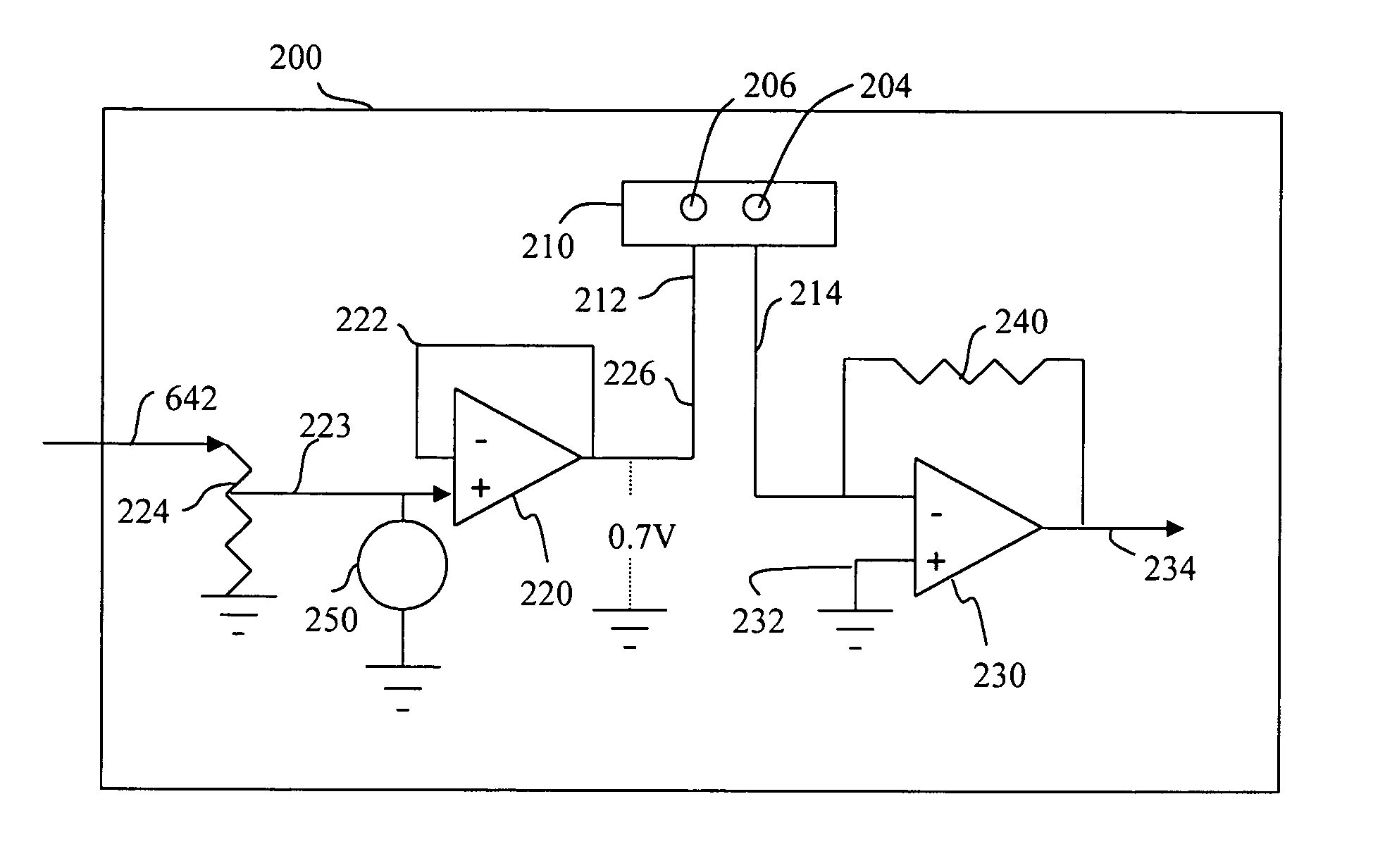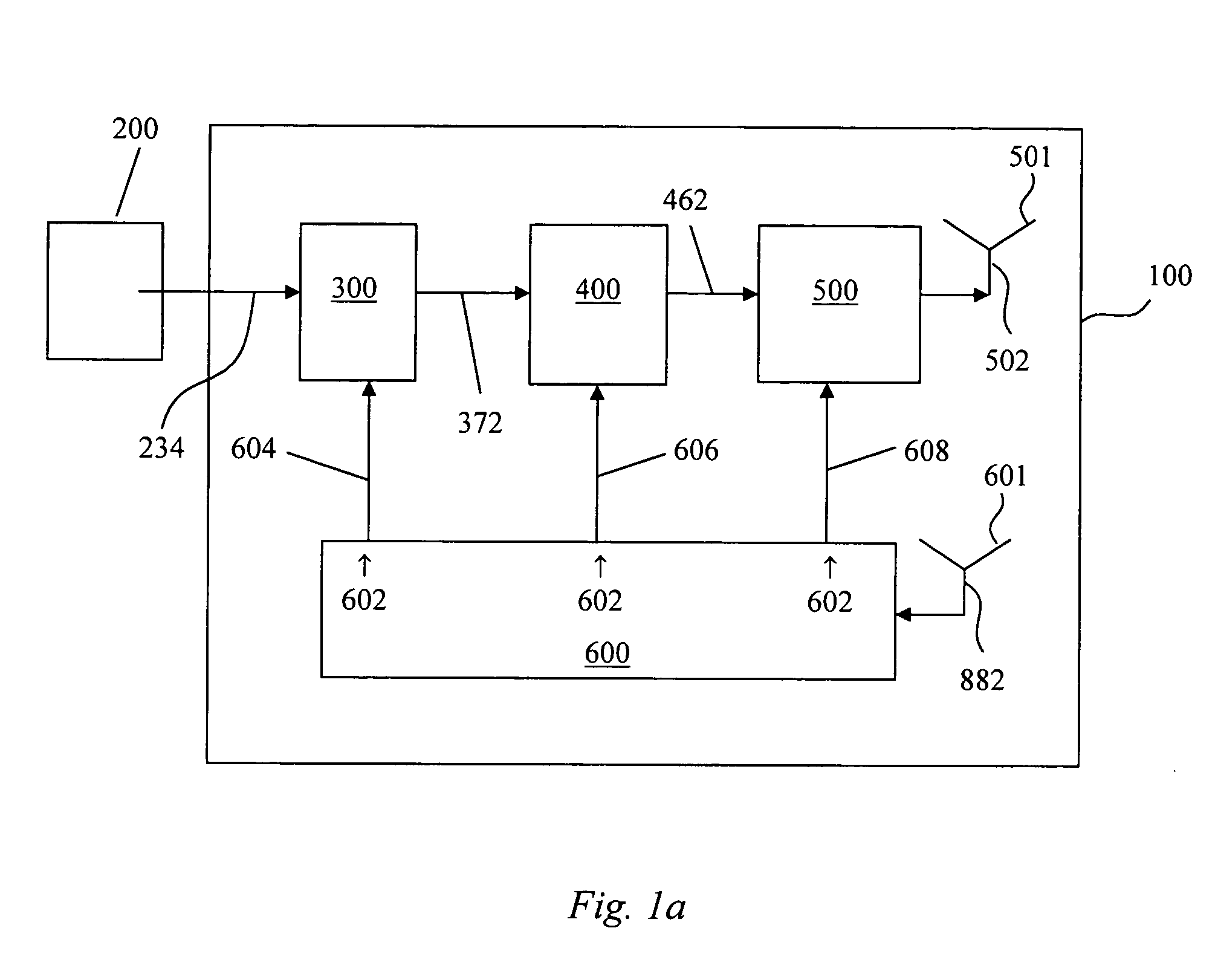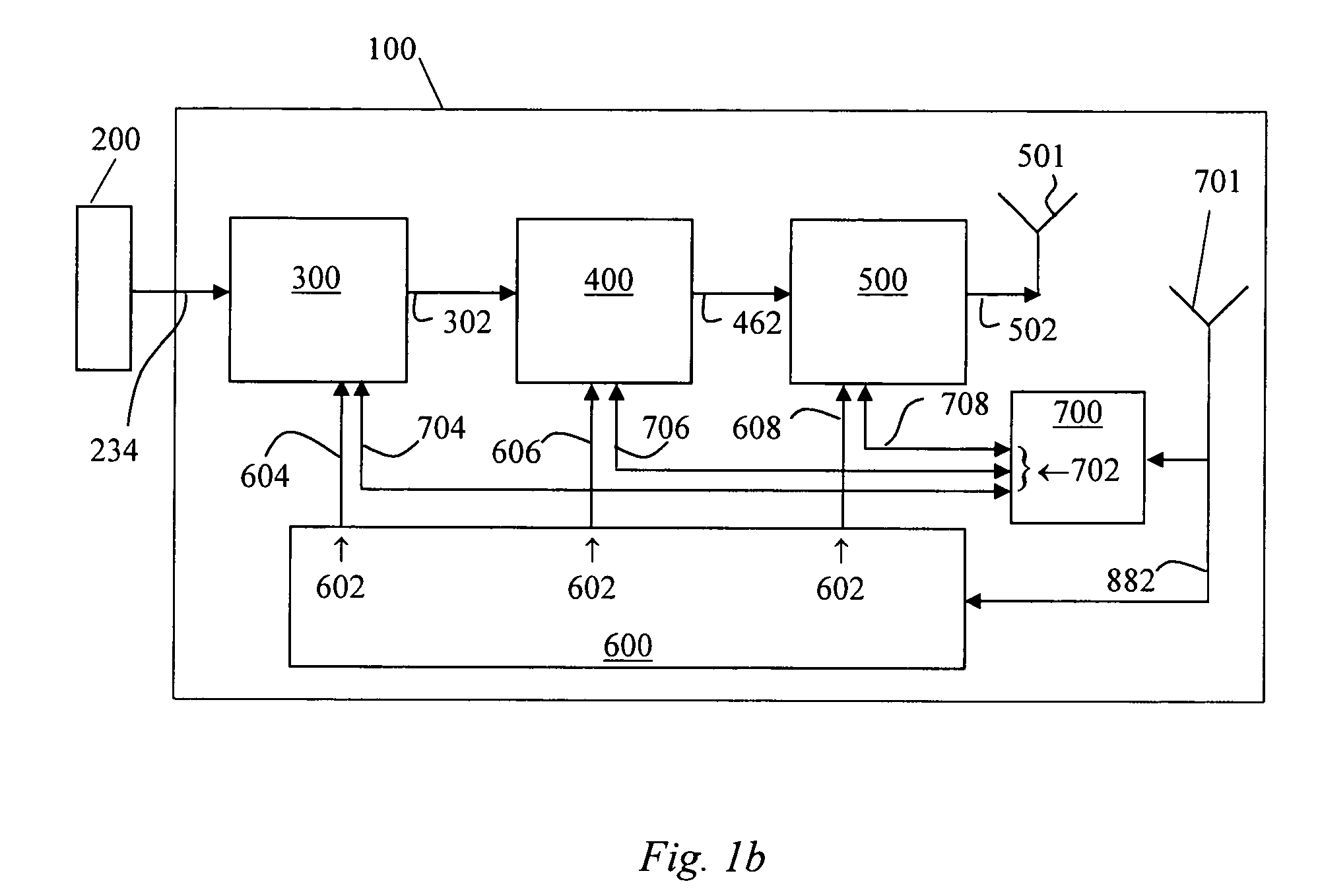Embedded bio-sensor system
a biosensor and embedded technology, applied in the field of biosensor systems, can solve the problems of insufficient regulation of the production of insulin by the pancreas, frequent fluctuation of glucose levels, uncomfortable finger pricking method of glucose testing, etc., and achieve the effect of improving the accuracy, precision and stability of the sensor reference voltage (i.e., the sensor power)
- Summary
- Abstract
- Description
- Claims
- Application Information
AI Technical Summary
Benefits of technology
Problems solved by technology
Method used
Image
Examples
Embodiment Construction
[0031]Referring now to the drawings wherein the showings are for purposes of illustrating various aspects of the invention and not for purposes of limiting the same, provided is a uniquely configured telemetric bio-sensor system 10 which utilized radio frequency identification (RFID) technology and which includes a remote transponder 800 that is in wireless communication with a passively powered on-chip transponder 100. The bio-sensor system 10 is specifically adapted to provide a substantially stable and precise voltage to a sensor assembly 200 that is included with the on-chip transponder 100. The on-chip transponder 100 is implantable into a host such as a human patient.
[0032]The remote transponder 800, which may be a compact handheld device, may be manually placed within a predetermined distance (e.g., within several feet) of the on-chip transponder 100 in order to supply power to and request telemetry data from the on-chip transponder 100. The remote transponder 800 may alterna...
PUM
 Login to View More
Login to View More Abstract
Description
Claims
Application Information
 Login to View More
Login to View More - R&D
- Intellectual Property
- Life Sciences
- Materials
- Tech Scout
- Unparalleled Data Quality
- Higher Quality Content
- 60% Fewer Hallucinations
Browse by: Latest US Patents, China's latest patents, Technical Efficacy Thesaurus, Application Domain, Technology Topic, Popular Technical Reports.
© 2025 PatSnap. All rights reserved.Legal|Privacy policy|Modern Slavery Act Transparency Statement|Sitemap|About US| Contact US: help@patsnap.com



